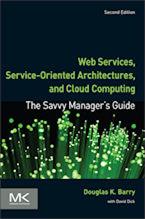Caching for Object Database Management Systems
Caching is the retention of data, usually in the application, to minimize network traffic flow and/or disk access. With transparent persistence, caching is often set up as part of the application work space. With this cache, there is no need for the application to explicitly move objects from disk. They move from disk storage automatically into program memory. This is either as a result of a query or from traversing the graph structure. For an animation that demonstrates this caching, see transparent persistence.
Caching for an ODBMS is similar in many respects as is caching for object-relational mapping. The exception is that that caching for object-relational mapping can have problems with cache synchronization. This problem not occur with ODBMSs because the cache is tightly integrated with the ODBMS server.
ODBMSs provide the lowest cost for development and best performance combination when using objects because they store objects on disk and have the transparent program integration with object programming languages. Performance is enhanced by storing objects directly on disk which eliminates impedance mismatch. Development costs are reduced because there is no need to program the caching for the application programs and there is only one model to develop.
Context for Caching for Object Database Management Systems
Related Articles for Caching for Object Database Management Systems
Author
Douglas K Barry
Principal
You may use this material for your work or classes. Reprint Policy. Be sure to check the menu at the left for other articles available on this site.
The Savvy Manager's Guide
Douglas K Barry is also the author of a book that explains Web Services, service-oriented architecture, and Cloud Computing in an easy-to-understand, non-technical manner.
Web Services, Service-Oriented Architectures, and Cloud Computing: The Savvy Manager's Guide (Second Edition)
by Douglas K Barry with David Dick
This is a guide for the savvy manager who wants to capitalize on the wave of change that is occurring with Web Services, service-oriented architecture, and—more recently—Cloud Computing. The changes wrought by these technologies will require both a basic grasp of the technologies and an effective way to deal with how these changes will affect the people who build and use the systems in our organizations. This book covers both issues. Managers at all levels of all organizations must be aware of both the changes that we are now seeing and ways to deal with issues created by those changes.

